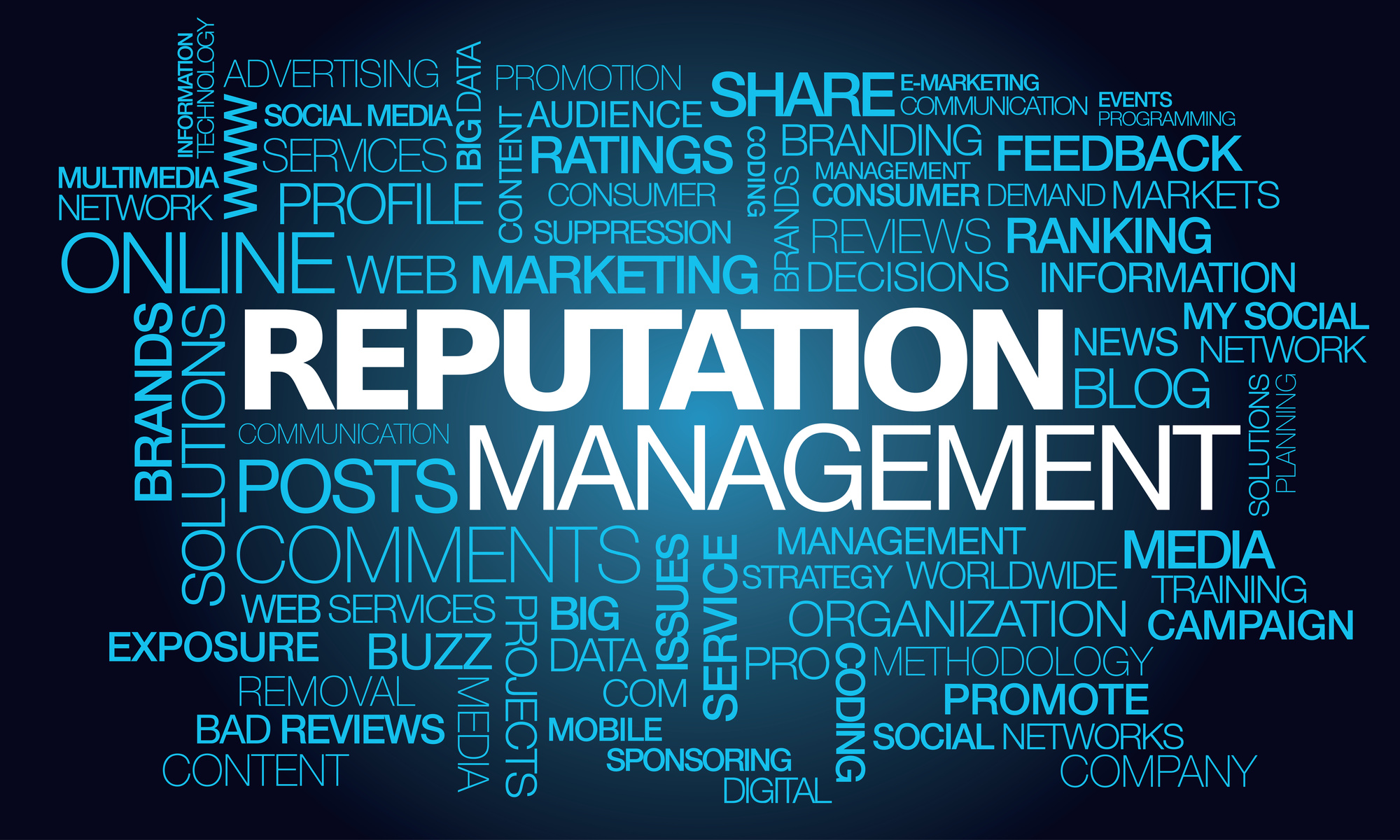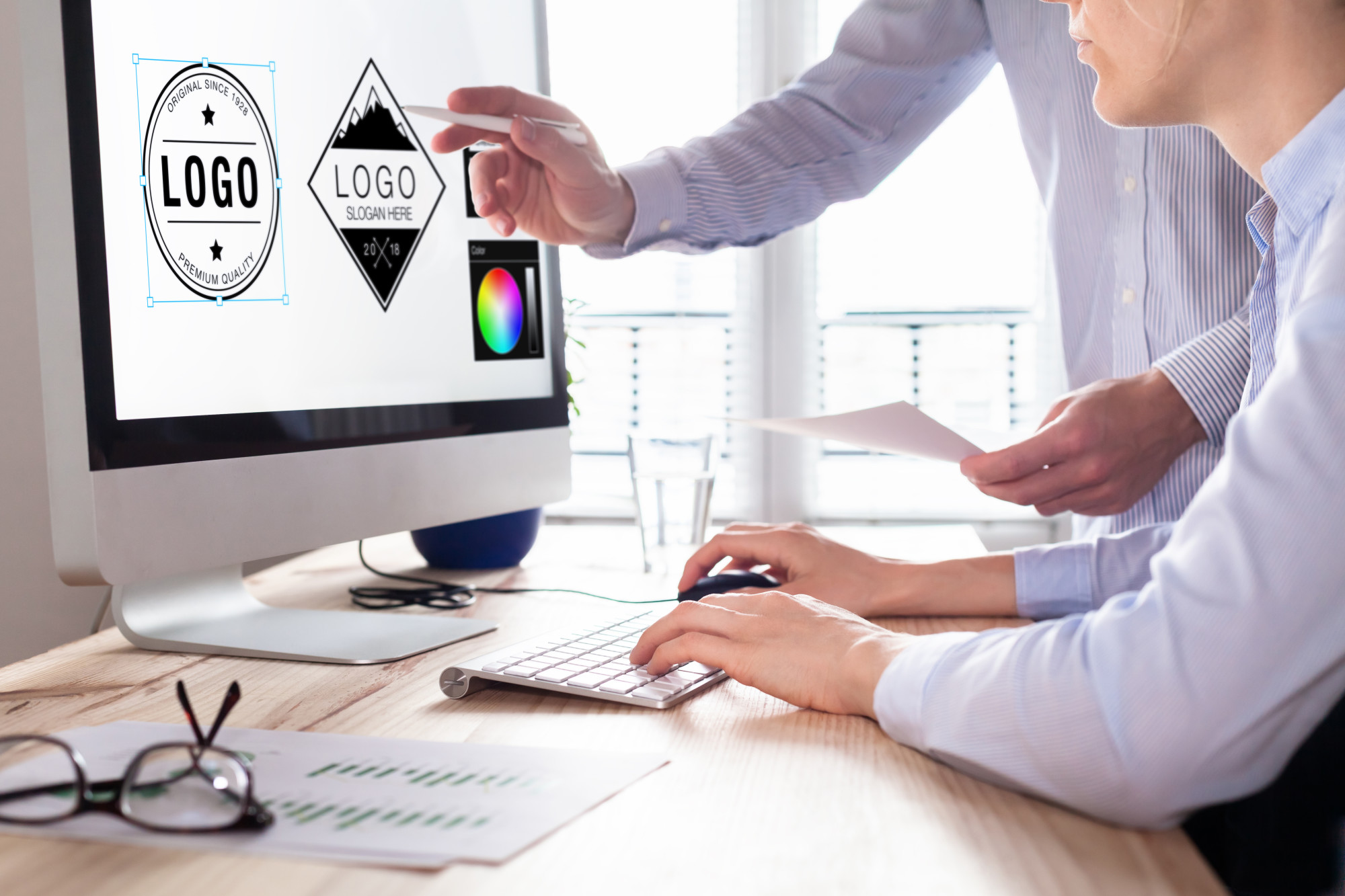Practical Tips for Raising Brand Awareness With a New Logo
Posted on May 25, 2021 by Logo Design Tips and Tricks

Do you know how many times it takes for consumers to remember your logo? It takes at least 5-7 impressions for a person to remember your brand.
It takes many more impressions for your brand to be top of mind. Brand awareness is the strategy behind getting your brand in front of the right people at the right time.
You can use your logo as a key tool to increase brand awareness. Doing it well can increase trust and sales. Who doesn’t want to do that?
Are you ready to learn how to use your logo to drive brand awareness? Let’s get started!
1. Does Your Logo Match Your Brand?
The very first consideration for increasing brand awareness is understanding what your brand is. You then have to make sure your logo matches your brand.
You might be confused because you think that your logo is your brand. Nope. That’s not how it works.
Your brand is the emotional impact that you want to leave a person with after they interact with your company. It’s usually summed up in just a few words.
Your logo is the visual part of the brand. The colors, fonts, and other aspects of the design have to match the emotional impact of the brand.
If these things don’t match, then your brand and logo won’t have an impact on consumers. They’ll be confused about what you really stand for.
2. Provide Amazing Service
There’s a link between brand awareness and customer service. That’s because people always remember incredible customer service. They also remember really bad experiences.
If you train your customer service team to go above and beyond for every customer, your brand awareness will increase.
3. Be Consistent
You need to present your brand in a consistent manner. That means that you can’t have as many versions of your logo as the Oregon Ducks have football uniform combinations.
People will look at your logo for a split second at first. You want your logo to be recognizable immediately. If it’s not, then people will move on.
If your brand is consistent, people will associate your logo with the other places they’ve seen it. The more often that happens, the more likely they’ll remember it.
4. Be More Social
Do you have a YouTube channel? Your logo should be ready for prime time to increase brand awareness. There are a couple of ways to use your logo in your videos.
The first is to create a 5-second introduction for your YouTube videos. You can do a quick animated logo with music in the background. People will associate that intro with your brand and they’ll remember it.
You can also have a transparent version of your logo appear in one of the corners of your video. This increases brand awareness by having your logo appear in your entire video.
This is a good strategy for Facebook and Instagram because people watching your video might not be familiar with your company. They could scroll and miss something in your video. The logo lets them know that they’re in the right place.
5. Use SEO to Target Your Audience
People turn to search engines whenever they have a question or they need to find information quickly. You can position your brand to be found in search engines.
Putting your logo on your Google My Business page and other directory listings will increase brand recognition. When people search for local services, your brand could stand at the top of search listings.
Do you have trouble getting found in Google? According to The Web Detective, that’s because the sites that are ranked ahead of you have better website optimization.
You can also invest in a blog and create content that you know people are searching for. When that content is ranked in search engines, you can get traffic and increase brand awareness.
6. Create Promotional Products
Promotional products do an excellent job of increasing brand awareness. Think about the impact that a T-shirt with your logo has.
It is a consistent way to present your brand and it increases impressions. This is the case when you have your employees wear the same shirts on client calls.
You can also increase brand awareness by giving away promotional products to your clients. It shows that you appreciate them.
7. Sell Your Values
That doesn’t mean you have to sell your soul or compromise your values. Quite the contrary. You should wear your values on your sleeve.
The problem that many companies have with this is that they aren’t clear on what their values are. It’s not enough to say that you and your team are decent people.
You have to stand for something and make that clear in your branding. You can take a stand for the environment by sourcing sustainable materials for your products.
Figure out what you value and make that part of your company’s brand.
Why is this important? About 64% of consumers say that shared values enhance brand trust. That trust turns into revenue for your business.
Create More Brand Awareness for More Business
You don’t have to have a huge marketing budget like the big brands to increase brand awareness. The helpful tips in this article show you how to improve brand awareness easily.
It starts by understanding what your brand is about and design a logo that aligns with your brand. You then need to be strategic about where you place it. The most important thing is to be consistent.
Be sure to check out the other articles on this site to help you improve your business.
How to Create a Social Media Brand With These 3 Strategies
Posted on April 28, 2021 by Logo Design Tips and Tricks

Gone are the days when social media was only used to keep in touch with old high school friends or check out the new crush of an ex-boyfriend or girlfriend. Right now, social media is one of the most effective ways to build, market, and advertise a successful business.
Do you want to triumph in an ever-crowded and ultra-competitive space? Then, you need a bulletproof, future-ready social media brand.
Fancy finding out more about this? Read on for our top three tips for creating a social media brand that overtakes all the competitors and attracts more customers than ever.
1. Tap Into the Potential Of Awesome Visual Elements
What is one of the most important factors that make a brand unique, exciting, and memorable? Visuals. From logos to animated graphics and videos, visual elements hold the key to success for most brands.
This is even more true when it comes to social media, as these are environments packed full of heavy, visual content. So, if you want your social media brand to stand out, invest some time into the design and development of visuals. Your logo should represent your values and mission, and you should be ready to explore new and bold visual ideas that capture the attention of your audience.
2. Identify and Develop Your Marketing and Buyer Personas
Speaking of audience: do you know who you are addressing with your social media content? If not, then it’s important to take a step back and have a thorough think.
Identifying your marketing and buyer personas is a fundamental step for a successful marketing plan on social media. This helps you to reach the right type of people with your posts. What good is a catchy, fun, informative social media caption if it doesn’t get to the people who are interested in that topic?
Do a bit of research, and start learning about the different types of audiences that populate each social media platform. TikTok, for example, is all the rage among teens, whereas Instagram is widely used by millennials. Zoom in to these personas whenever you create and post your social media content, and you’ll reach your target more effectively.
3. Define Your Tone of Voice with Compelling Social Media Copy
Powerful visuals are crucial, but so is concise, engaging social media copy. This refers to the captions that you use for photos and other visual elements, as well as to any hashtags or other tagging features.
Creating great copy enables you to highlight your brand’s tone of voice. This, in turn, makes you unique and memorable and raises brand awareness.
Do you already have a tone of voice that you are using across your other marketing channels? Great, you can either extend that to social media or tweak it a bit to make it more social media-friendly.
Ready to Supercharge Your Social Media Brand?
Creating and developing an awesome social media brand is fundamental if you want your business to thrive on these all-important marketing platforms. With our tips and tricks, you can easily achieve this and maintain it in the long run.
If you have enjoyed this article, make sure to check the rest of our website for more great content like this.
The Importance of Personal Online Reputation Management
Posted on April 27, 2021 by Logo Design Tips and Tricks

Are you building a brand and not concerned about reputation management? Perhaps you have a small business and not in touch with what customers are saying about your business online. If this is you, you’re on track for a humbling awakening if consumers are not happy with your business.
Online reputation management ensures unfavorable reviews never blindside you. It also provides the tools needed to improve your online image.
As digital technology grows and more entrepreneurs and business owners are online, the more exposure they have. Keep reading to learn more about the importance of personal online reputation management.
Reputation Management Extends Beyond Business
Every business has multiple faces and multiple ways its reputation can take a hit. Global brands like Starbucks and regional brands such as the popular grocery chain Publix are examples.
Each has had to head off reputation crises in the past year. Whether it is an owner or an employee at a specific location, the entire brand is impacted.
What happens when the crisis or scandal is about the individual behind the brand? The CEO, spokesperson, or the brand itself. Scandals and bad publicity are where reputation management for individuals comes into play.
You’ll want to get in front of the problem before online gossip sites can paint the narrative. In this article, we see firsthand how reputations are ruined when a story goes viral.
Personal Online Reputation Management Tools
Online Reputation Management tools or (ORM) are designed to monitor online content to track what people say about a person and their business.
There are multiple ways people can post online content or reviews. Sometimes it isn’t easy to track the flow of information beyond the testimonial page on a brand’s website.
Today there are social media platforms, review sites, and stories leaked to bloggers to contend with.
With the right ORM tools, you’re able to monitor everything being said about you. Reputation management services include:
Demoting Negative Content
Digital marketing is all about search engine optimization and getting to the top of search engine result pages. Demoting negative content does the opposite. It pushes negative content down, making them less visible to people searching for your name.
Content Monitoring
With content monitoring tools and personal online reputation management services, the internet is monitored continuously. Tools include alerts for keywords related to your business.
Content Creation
When negative stories appear on online gossip sites, you want reputation management for individuals. The strategy to combat negative press moves into content creation.
Positive articles and social posts are posted to negate the negative press. This strategy can reverse the publics’ opinion of celebrities and prominent public figures.
Is Your Reputation on the Line?
Investing in reputation management should happen sooner rather than later. Implementing tools to combat negative press and reviews are best to have in place before its needed.
There’s a lot that goes into building your brand. We have you covered with the latest trends in business and technology.
Learn more by following our great content.
8 Things You Need To Consider When Designing a Logo
Posted on January 24, 2021 by Logo Design Tips and Tricks

Your logo is one of the most important aspects of your business. It can set the tone for your style and be the one feature that customers remember. That’s why it’s so essential to get the logo right.
But what makes a good logo? There isn’t just one element that makes a logo a winner. All good logos have multiple amazing elements that come together to create something memorable.
Then if there are so many contributors to a good logo, how do you create one? Here are eight tips to consider when designing a logo.
1. Consider Your Audience
Before you start your business or brand, you have to know who your target audience is. This will help you make all of the future decisions that will help grow your business or brand. But you also need to take your target audience into account with your logo.
That’s because your logo helps to create your brand identity. Your logo can help establish the service or product you offer and who that service or product is for.
Your brand logo will look different if you’re target audience is children than if your target audience is young adults. Your audience can determine all the other factors within your logo.
2. Trendy vs. Unique
Your logo should keep up with the trends so that it feels current and refreshing. But there is a fine line between following the trends and being too trendy. You don’t want your logo design to stand out in the wrong way.
But you do want your design to stand out in a unique way. To get ahead of competitors, you should get creative with your logo design. No matter what style you choose, your logo should relate to your product or services.
Choose images and elements that relate to your brand. Hardware tools don’t make much sense on a logo for a retreat and spa.
3. Lean Into Typography
Typography can make or break your design. The font within your logo is just as important as any other design element. Your typography should complement the other elements, be easy to read, and make sense for your brand.
If you have a lot of delicate strokes and thin lines, then a font with bold, heavy strokes may look out of place. Consider your product or service when choosing the typography as well. A hardware store will need a different font than a tech company.
Above all, your typography should be easy for your customers to read. If no one knows what your logo says, then how are they supposed to find your business?
4. Conversion is Everything
On the technical side, your logo should be able to convert to different file formats. JPG, GIF, PNG, WMP, and TIFF are only a few options you should explore. They allow for your logo to render as a single element rather than separate elements.
This allows you to scale your logo up or down and be used on the web and printing a logo. Whether you design or your own logo or have it professionally designed, you want to have as many file formats as possible.
This will allow you to effectively use your logo on various mediums while maintaining the design’s clarity.
5. The Logo Has to Look Good
It comes as no surprise that a logo has to look good. If a consumer is faced with a decision, more often than not, they will choose a business or brand with a better design. But your logo also has to look good on everything.
You won’t use your logo in just one format because you’ll want to use it for various purposes. The logo has to look just as good small on a business card as it does large, on a banner, and everything in between.
Consider also the material of promotional items. From cotton t-shirts to ceramic mugs to paper business cards, you want your logo to look good on all mediums. Allow your logo to be flexible enough to work on any medium at any size.
6. Don’t Over Complicate
When it comes to a logo, simplicity is better than complicated. It may seem tempting to add in a lot of elements to get your point across. But with a logo, less is always more.
Think of some of the most well-recognized logos. They utilize a few colors, have a memorable, or may even be only one image. A simple design looks best when sticker printing, letterheads, or on social media.
Avoid overcrowding your design and pare down your logo to the essential elements. A simple image or striking font can be more memorable and pleasing to the eye.
7. Think About Color
Color can be one of the most useful tools in your logo design. There are so many brands, large and small, that can be recognized by color alone. Your logo color can determine the entire feeling of your brand.
Choose shades that complement each other by using a color wheel. You should also look into the meaning behind color to help you make your decision. As important as color is, you also consider how your logo looks in black and white.
8. Do Your Research
This is one of the most vital steps you can take when considering a logo design. Do some research on your target audience as well as competitor brands and businesses.
Find out what kind of logos customers best respond to and utilize those elements in your own branding. You can also see the logos that your competitors are using to stay ahead of the trend.
Designing A Logo That’s Memorable
Have you ever scrolled through social media or browsed the internet and stumbled upon a business that had a great memorable logo? Doesn’t it make the brand and business feel more cohesive and trustworthy?
If you had a choice between two businesses, with one having a stunning logo and the other only having plain text, which are you more likely to purchase from? That’s the power of designing a logo that returning and potential customers can’t forget.
But there’s much more to creating the perfect logo than meets the eye. These eight tips are great to consider before you start designing a logo for your business or brand.
Did you find this article helpful? Share it with a friend and check out more marketing and advertising advice.








